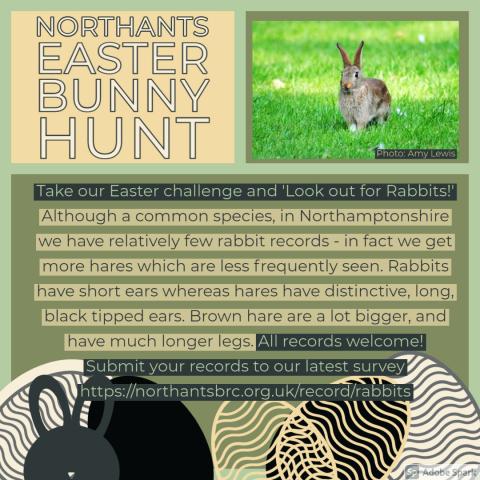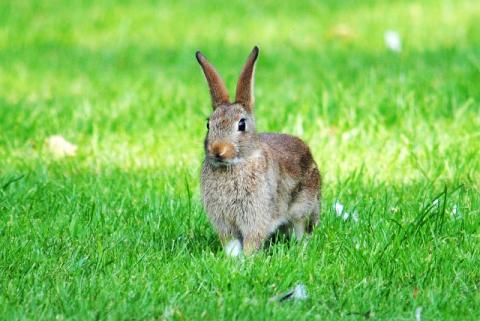
Spring is in the air and we'd like to present you with an Easter challenge by joining in with our Look out for Rabbits! survey. Although thought to be common and widespread in Northamptonshire, we have relatively few records of rabbits in Northants and there are large areas of the county for which we have no records at all.
The rabbit Oryctolagus cuniculus was introduced to Britain by the Normans in the 12th century to provide meat and fur and are now widespread in Britain. They can be found in a wide variety of habitats, anywhere they can burrow. Although thought to be common and widespread in Northamptonshire, we have relatively few records of rabbits in Northants and there are large areas of the county for which we have no records at all. This spring we are asking you to look out for rabbits and send us your sightings using the form below.
Rabbits vs Hares
The brown hare Lepus europaeus can look rather similar to a rabbit, but is much less frequent in the county, although we have similar numbers of records for rabbits and hares! The first thing to notice is that hares are a lot bigger than rabbits, and have much longer legs. Rabbits have short ears whereas hares have distinctive, long, black tipped ears.
If you get a close view then you will see that hares have distinctive amber coloured eyes, whereas rabbits have brown eyes. If you see the animal moving then it is fairly easy to tell whether you are looking at a rabbit or a hare, as rabbits tend to hop along whereas hares walk and run.


Don’t forget that if you see a hare, we would love those records too! You can enter your hare records using our standard submit a sighting form
If you would like to submit more than one sighting or plan to submit sightings on a regular basis, please create an account before you submit your sightings. You will then be able to view, edit and download all your submitted records.
We would love you to help us fill in these gaps on the map and increase our knowledge about wildlife in the county.

